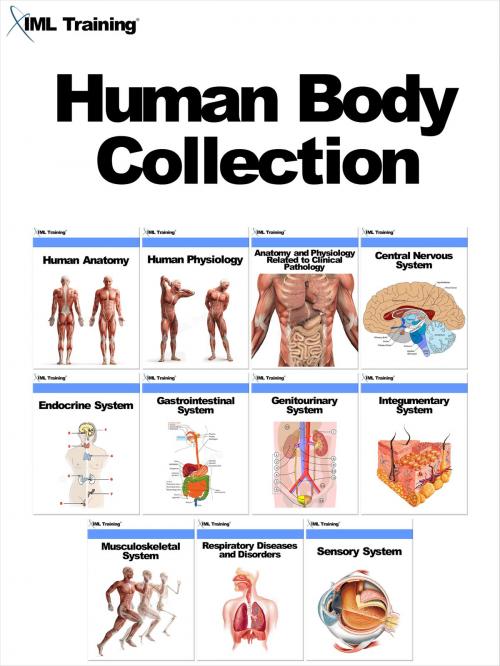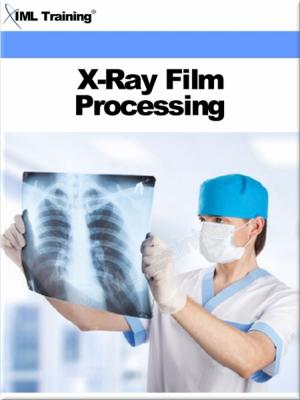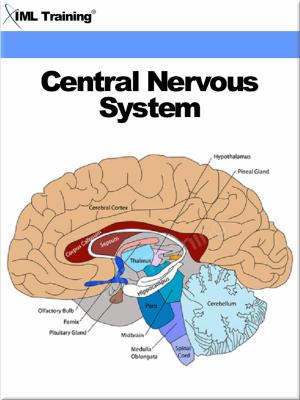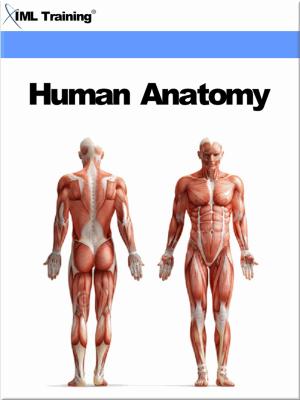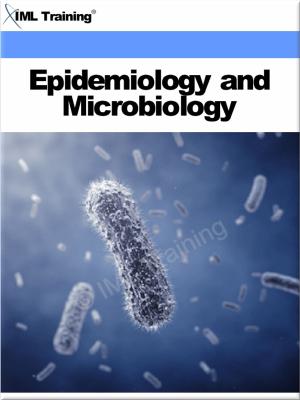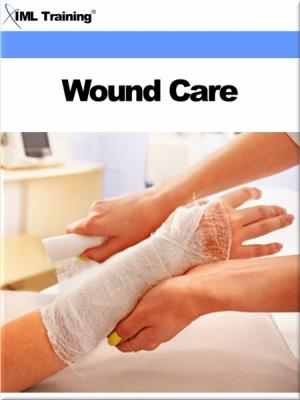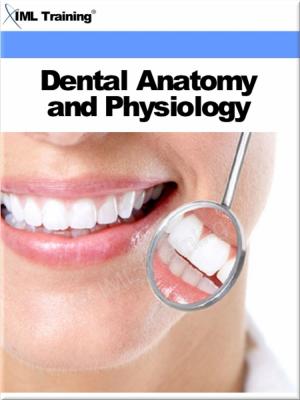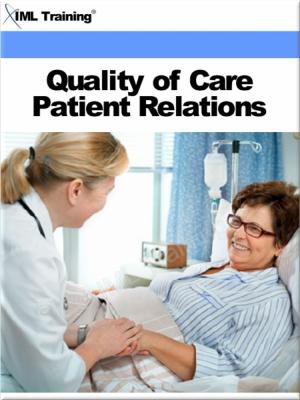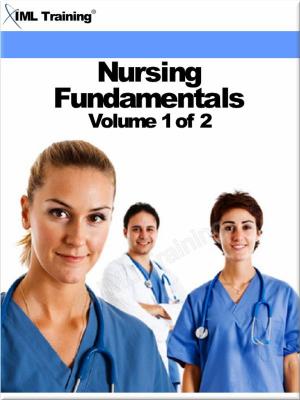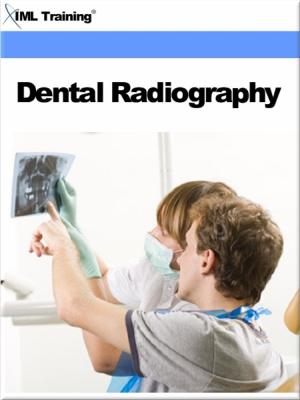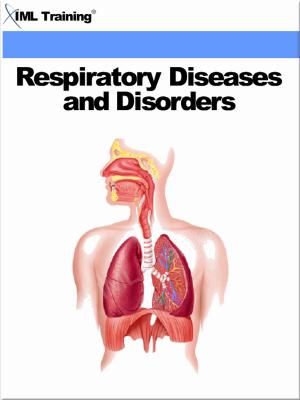Human Body Collection
Includes Human Anatomy, Human Physiology, Anatomy and Physiology Related to Clinical Pathology, Central Nervous, Endocrine, Gastrointestinal, Genitourinary, Integumentary, Musculoskeletal System, Respiratory Diseases and Disorders, and Sensory System
Nonfiction, Health & Well Being, Medical, Medical Science, Anatomy| Author: | ISBN: | 9781782582557 | |
| Publisher: | IML Training | Publication: | August 23, 2013 |
| Imprint: | IML Training | Language: | English |
| Author: | |
| ISBN: | 9781782582557 |
| Publisher: | IML Training |
| Publication: | August 23, 2013 |
| Imprint: | IML Training |
| Language: | English |
Human Body Collection
This collection includes 11 of our training courses all within one book. You can easily use the bookmarks to navigate between each training course. This collection includes:
- Human Anatomy
- Human Physiology
- Anatomy and Physiology Related to Clinical Pathology
- Central Nervous System
- Endocrine System
- Gastrointestinal System
- Genitourinary System
- Integumentary System
- Musculoskeletal System
- Respiratory Diseases and Disorders
- Sensory System
Full illustrations and diagrams included.
Human Anatomy
Human anatomy is primarily the scientific study of the morphology of the human body. In this extensive course, you will study basic human anatomy.
Human Physiology
Human physiology is the science of the mechanical, physical, bioelectrical, and biochemical functions of humans in good health, their organs, and the cells of which they are composed. Physiology focuses principally at the level of organs and systems. In this extensive course, you will study basic human physiology.
Anatomy and Physiology Related to Clinical Pathology
This course is designed to give you a basic overview of anatomy, physiology, and pathology. Many important reactions are constantly occurring within the body. This course covers the types of reactions and what would happen if these reactions did not occur.
Central Nervous System
The central nervous system is the part of the nervous system that integrates the information that it receives from, and coordinates the activity of, all parts of the body.
Endocrine System
The endocrine system is the system of glands, each of which secretes different types of hormones directly into the bloodstream (some of which are transported along nerve tracts to regulate the body.
Gastrointestinal System
The Gastrointestinal System processes food so that it can be used by the body. Chemical reactions occur in each body cell. Some chemical reactions synthesize new enzymes, cell structures, bone, and other components of the body.
Genitourinary System
In anatomy, the genitourinary system or urogenital system is the organ system of the reproductive organs and the urinary system. These are grouped together because of their proximity to each other, their common embryological origin and the use of common pathways, like the male urethra.
Integumentary System
The Integumentary System is the organ system that protects the body from damage, comprising the skin and its appendages. The skin is not just a simple thin covering which keeps the body together. The skin is a complex combination of tissues that perform functions necessary for human survival.
Musculoskeletal System
The Musculoskeletal System is composed of osseous (bone) tissue and muscle tissue. Both are essential parts of the complex structure that is the body.
Respiratory Diseases and Disorders
Respiratory System is the biological system that introduces respiratory gases to the interior and performs gas exchange. The respiratory tract has defense mechanisms that prevent most microorganisms and foreign objects from entering the lungs of a healthy person.
Sensory System
The sensory system is a part of the nervous system responsible for processing sensory information. A sensory system consists of sensory receptors, neural pathways, and parts of the brain involved in sensory perception.
This collection includes 11 of our training courses all within one book. You can easily use the bookmarks to navigate between each training course. This collection includes:
- Human Anatomy
- Human Physiology
- Anatomy and Physiology Related to Clinical Pathology
- Central Nervous System
- Endocrine System
- Gastrointestinal System
- Genitourinary System
- Integumentary System
- Musculoskeletal System
- Respiratory Diseases and Disorders
- Sensory System
Full illustrations and diagrams included.
Human Anatomy
Human anatomy is primarily the scientific study of the morphology of the human body. In this extensive course, you will study basic human anatomy.
Human Physiology
Human physiology is the science of the mechanical, physical, bioelectrical, and biochemical functions of humans in good health, their organs, and the cells of which they are composed. Physiology focuses principally at the level of organs and systems. In this extensive course, you will study basic human physiology.
Anatomy and Physiology Related to Clinical Pathology
This course is designed to give you a basic overview of anatomy, physiology, and pathology. Many important reactions are constantly occurring within the body. This course covers the types of reactions and what would happen if these reactions did not occur.
Central Nervous System
The central nervous system is the part of the nervous system that integrates the information that it receives from, and coordinates the activity of, all parts of the body.
Endocrine System
The endocrine system is the system of glands, each of which secretes different types of hormones directly into the bloodstream (some of which are transported along nerve tracts to regulate the body.
Gastrointestinal System
The Gastrointestinal System processes food so that it can be used by the body. Chemical reactions occur in each body cell. Some chemical reactions synthesize new enzymes, cell structures, bone, and other components of the body.
Genitourinary System
In anatomy, the genitourinary system or urogenital system is the organ system of the reproductive organs and the urinary system. These are grouped together because of their proximity to each other, their common embryological origin and the use of common pathways, like the male urethra.
Integumentary System
The Integumentary System is the organ system that protects the body from damage, comprising the skin and its appendages. The skin is not just a simple thin covering which keeps the body together. The skin is a complex combination of tissues that perform functions necessary for human survival.
Musculoskeletal System
The Musculoskeletal System is composed of osseous (bone) tissue and muscle tissue. Both are essential parts of the complex structure that is the body.
Respiratory Diseases and Disorders
Respiratory System is the biological system that introduces respiratory gases to the interior and performs gas exchange. The respiratory tract has defense mechanisms that prevent most microorganisms and foreign objects from entering the lungs of a healthy person.
Sensory System
The sensory system is a part of the nervous system responsible for processing sensory information. A sensory system consists of sensory receptors, neural pathways, and parts of the brain involved in sensory perception.
Human Body Collection
This collection includes 11 of our training courses all within one book. You can easily use the bookmarks to navigate between each training course. This collection includes:
- Human Anatomy
- Human Physiology
- Anatomy and Physiology Related to Clinical Pathology
- Central Nervous System
- Endocrine System
- Gastrointestinal System
- Genitourinary System
- Integumentary System
- Musculoskeletal System
- Respiratory Diseases and Disorders
- Sensory System
Full illustrations and diagrams included.
Human Anatomy
Human anatomy is primarily the scientific study of the morphology of the human body. In this extensive course, you will study basic human anatomy.
Human Physiology
Human physiology is the science of the mechanical, physical, bioelectrical, and biochemical functions of humans in good health, their organs, and the cells of which they are composed. Physiology focuses principally at the level of organs and systems. In this extensive course, you will study basic human physiology.
Anatomy and Physiology Related to Clinical Pathology
This course is designed to give you a basic overview of anatomy, physiology, and pathology. Many important reactions are constantly occurring within the body. This course covers the types of reactions and what would happen if these reactions did not occur.
Central Nervous System
The central nervous system is the part of the nervous system that integrates the information that it receives from, and coordinates the activity of, all parts of the body.
Endocrine System
The endocrine system is the system of glands, each of which secretes different types of hormones directly into the bloodstream (some of which are transported along nerve tracts to regulate the body.
Gastrointestinal System
The Gastrointestinal System processes food so that it can be used by the body. Chemical reactions occur in each body cell. Some chemical reactions synthesize new enzymes, cell structures, bone, and other components of the body.
Genitourinary System
In anatomy, the genitourinary system or urogenital system is the organ system of the reproductive organs and the urinary system. These are grouped together because of their proximity to each other, their common embryological origin and the use of common pathways, like the male urethra.
Integumentary System
The Integumentary System is the organ system that protects the body from damage, comprising the skin and its appendages. The skin is not just a simple thin covering which keeps the body together. The skin is a complex combination of tissues that perform functions necessary for human survival.
Musculoskeletal System
The Musculoskeletal System is composed of osseous (bone) tissue and muscle tissue. Both are essential parts of the complex structure that is the body.
Respiratory Diseases and Disorders
Respiratory System is the biological system that introduces respiratory gases to the interior and performs gas exchange. The respiratory tract has defense mechanisms that prevent most microorganisms and foreign objects from entering the lungs of a healthy person.
Sensory System
The sensory system is a part of the nervous system responsible for processing sensory information. A sensory system consists of sensory receptors, neural pathways, and parts of the brain involved in sensory perception.
This collection includes 11 of our training courses all within one book. You can easily use the bookmarks to navigate between each training course. This collection includes:
- Human Anatomy
- Human Physiology
- Anatomy and Physiology Related to Clinical Pathology
- Central Nervous System
- Endocrine System
- Gastrointestinal System
- Genitourinary System
- Integumentary System
- Musculoskeletal System
- Respiratory Diseases and Disorders
- Sensory System
Full illustrations and diagrams included.
Human Anatomy
Human anatomy is primarily the scientific study of the morphology of the human body. In this extensive course, you will study basic human anatomy.
Human Physiology
Human physiology is the science of the mechanical, physical, bioelectrical, and biochemical functions of humans in good health, their organs, and the cells of which they are composed. Physiology focuses principally at the level of organs and systems. In this extensive course, you will study basic human physiology.
Anatomy and Physiology Related to Clinical Pathology
This course is designed to give you a basic overview of anatomy, physiology, and pathology. Many important reactions are constantly occurring within the body. This course covers the types of reactions and what would happen if these reactions did not occur.
Central Nervous System
The central nervous system is the part of the nervous system that integrates the information that it receives from, and coordinates the activity of, all parts of the body.
Endocrine System
The endocrine system is the system of glands, each of which secretes different types of hormones directly into the bloodstream (some of which are transported along nerve tracts to regulate the body.
Gastrointestinal System
The Gastrointestinal System processes food so that it can be used by the body. Chemical reactions occur in each body cell. Some chemical reactions synthesize new enzymes, cell structures, bone, and other components of the body.
Genitourinary System
In anatomy, the genitourinary system or urogenital system is the organ system of the reproductive organs and the urinary system. These are grouped together because of their proximity to each other, their common embryological origin and the use of common pathways, like the male urethra.
Integumentary System
The Integumentary System is the organ system that protects the body from damage, comprising the skin and its appendages. The skin is not just a simple thin covering which keeps the body together. The skin is a complex combination of tissues that perform functions necessary for human survival.
Musculoskeletal System
The Musculoskeletal System is composed of osseous (bone) tissue and muscle tissue. Both are essential parts of the complex structure that is the body.
Respiratory Diseases and Disorders
Respiratory System is the biological system that introduces respiratory gases to the interior and performs gas exchange. The respiratory tract has defense mechanisms that prevent most microorganisms and foreign objects from entering the lungs of a healthy person.
Sensory System
The sensory system is a part of the nervous system responsible for processing sensory information. A sensory system consists of sensory receptors, neural pathways, and parts of the brain involved in sensory perception.
